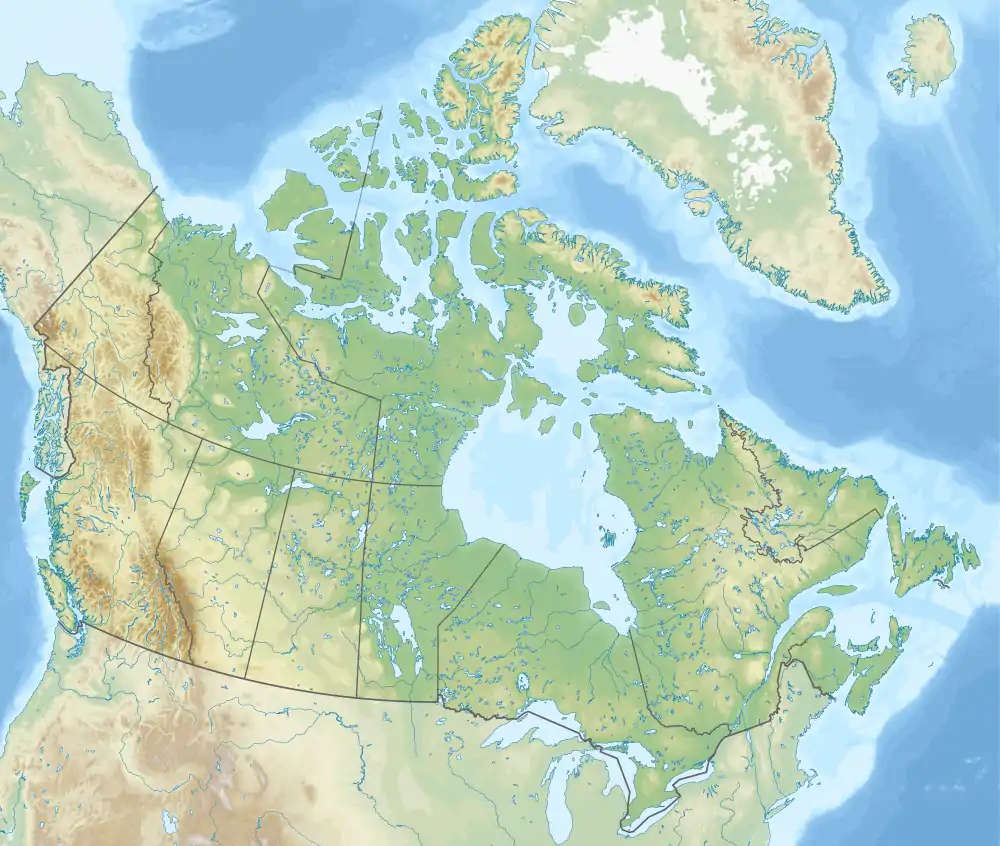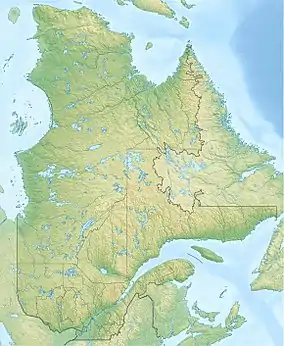Indian Point Formation
The Indian Point Formation is a geologic formation in Quebec. It preserves fossils dating back to the Ludlow epoch of the Silurian period.[1]
| Indian Point Formation Stratigraphic range: Ludlow epoch ~423–419 Ma | |
|---|---|
| Type | Formation |
| Underlies | Archibald Settlement Formation |
| Lithology | |
| Primary | Sandstone, siltstone, calcarenite |
| Other | Biostromal limestone, conglomerate, mafic volcanic rock |
| Location | |
| Coordinates | 48.8°N 64.5°W |
| Approximate paleocoordinates | 26.6°S 29.7°W |
| Region | Quebec |
| Country | |
| Extent | Gaspe National Park |
 Indian Point Formation (Canada)  Indian Point Formation (Quebec) | |
Description
The Indian Point Formation comprises thin- to thick-bedded, locally fossiliferous, calcareous siltstones, fine-grained sandstones, calcarenites, and minor biostromal limestones, conglomerates, red siltstones, and mafic volcanic rocks. The Indian Point Formation is conformably overlain by within-plate tholeiitic mafic to intermediate flows and flow breccias of the Archibald Settlement Formation, developed as a synsedimentary normal fault in the Late Silurian, based on the presence of polymictic conglomerate beds in a thickened Indian Point section east of the fault. Post-Early Devonian (Acadian) orogenic events have produced open to close folds with northeast-trending axes.[2]
Fossil content
The following fossils were reported from the formation:[1][3]
Eurypterids
Pterobranchia
See also
- List of fossiliferous stratigraphic units in Quebec
- Bertie Formation, Silurian Lagerstätte in Ontario
- Charlevoix crater, Silurian impact crater in Quebec
References
- Indian Point Formation at Fossilworks.org
- Eurypterid-associated biota of Indian Point Fmn. in Gaspe National Park at Fossilworks.org
- Plotnick, 1999
Bibliography
- Plotnick, R. E. 1999. Habitat of Llandoverian-Lochkovian eurypterids, 106–136. in A. J. Boucot, J. D. Lawson (eds.), Paleocommunities - a case study from the Silurian and Lower Devonian.
